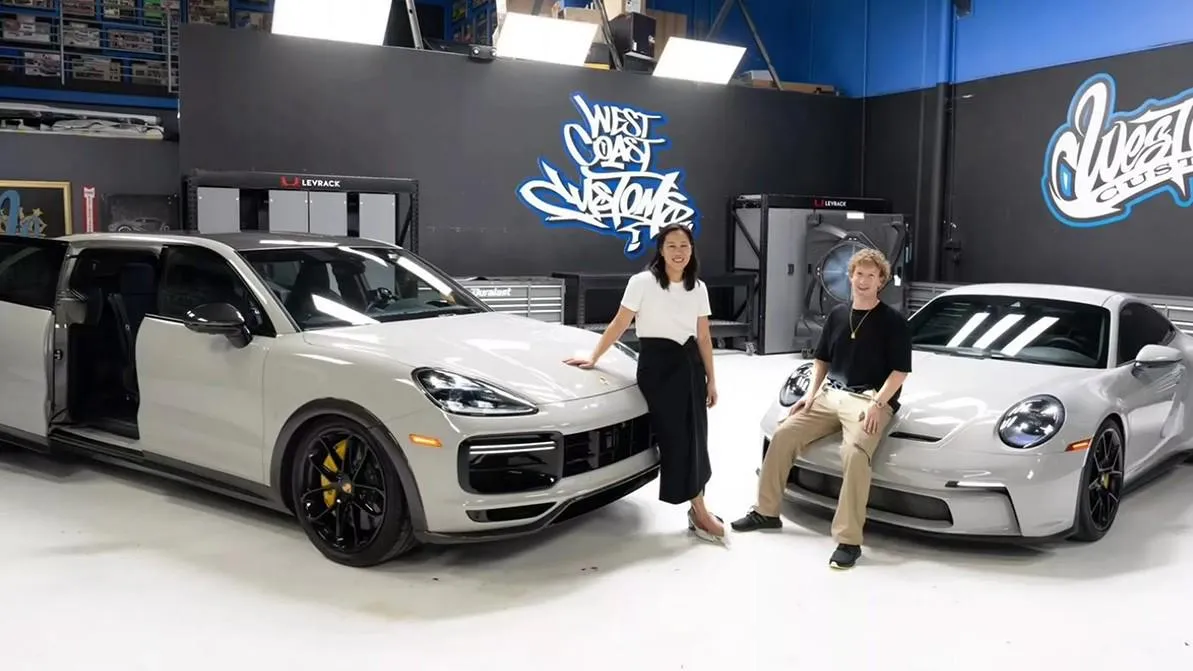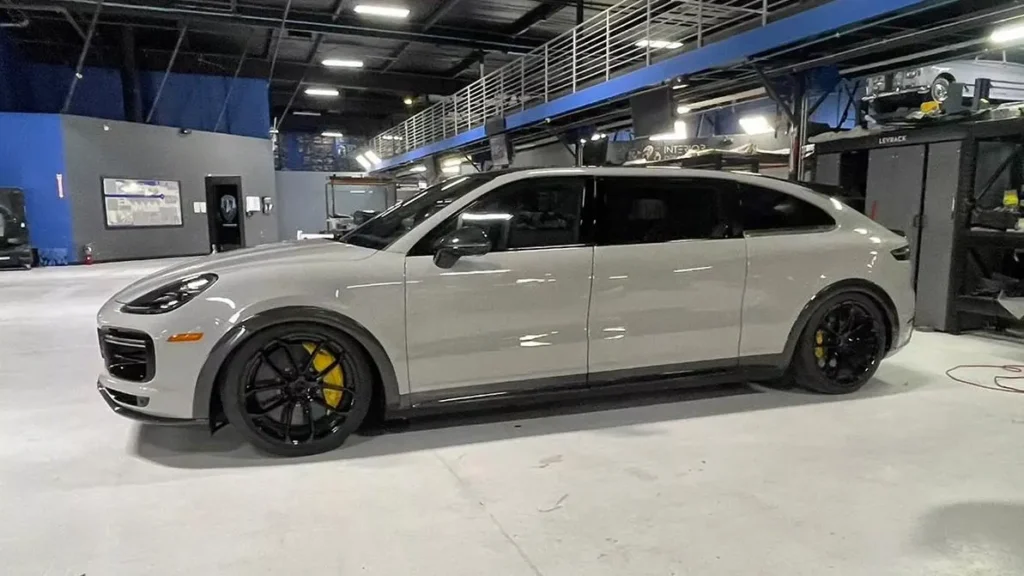Inside The Porsche Cayenne Minivan Mark Zuckerberg Story

I first saw the porsche cayenne minivan mark zuckerberg build on my feed and paused mid-scroll. At a glance, it looked like a long, low Cayenne in matching grey next to a 911 GT3, but the side doors gave it away—this was a minivan take on Porsche’s quickest SUV. So I dug in, cross-checked details, and tried to answer a simple question, why would anyone turn a Cayenne Turbo GT into a family hauler with sliding doors?
- The porsche cayenne minivan Mark Zuckerberg built started with a clear family need—minivan access with Porsche performance.
- West Coast Customs stretched a Cayenne Turbo GT and integrated sliding doors, creating a one-off that’s both quick and usable.
- The project sparked debate but also widened the conversation about what a modern family performance vehicle can be.
At first, I wondered if the photos were a prank. Then I read more and realized the porsche cayenne minivan mark zuckerberg project started as a direct family ask. According to posts and coverage, Priscilla Chan wanted a minivan. Meanwhile, the car-obsessed spouse wanted Porsche performance and build quality. Those two ideas met in a single brief, and the result is this unusual one-off.
Read More: Eplus4car: My First‑Person Look at Smart Green Driving
Who built it and what Porsche said
From what I’ve gathered, West Coast Customs executed the conversion after Mark Zuckerberg shared the concept publicly. The shop is known for big, complex one-offs, and this one sits right at the edge of what’s possible with a modern unibody SUV. Reports also note that Porsche acknowledged the project in social comments, which suggests at least friendly awareness from the brand—even if it isn’t a factory program. That context helped me see the porsche cayenne minivan mark zuckerberg story as a serious build and not just a meme car.
Yes, it began with a social post, but the details outline a full engineering effort. You don’t get sliding doors, stretched structure, and a tidy exterior without months of design, fabrication, and testing. And while Porsche didn’t build it, the conversation around it quickly spread through the enthusiast press because this might be the first time anyone has seen a true Porsche minivan on the road—even if it started life as an SUV.
What changed on the Cayenne
Under the skin, the donor was a Cayenne Turbo GT, which is already the sharpest, most track-capable variant in the lineup. For the porsche cayenne minivan mark zuckerberg conversion, the body was lengthened to create a van-like profile and cabin space. The most obvious addition is the pair of powered sliding rear doors. Getting those to sit flush and operate cleanly with the Cayenne’s lines is no small job. Based on reports, the shop cut and extended the center section, then integrated the sliders with revised pillars, tracks, and seals.
The result is a silhouette that lands somewhere between long-roof crossover and true MPV. The roofline stays smooth, the rear quarter glass stretches to match, and the stance remains low and planted thanks to the Turbo GT hardware. It won’t please every purist, but it looks like a coherent design rather than a hacked-up experiment. That visual balance is one reason the porsche cayenne minivan mark zuckerberg images drew so much attention.
Speed plus space
Performance numbers add another twist. The Turbo GT’s twin-turbo 4.0-liter V-8 is a monster, and coverage pegs the 0–60 mph time at around 3.1 seconds in stock form, with a top speed that pushes into super-SUV territory. Even after modification, the basic recipe—big power, fast shifts, and serious brakes—remains. That means school runs with hypercar punch. It’s wild to write this, but the porsche cayenne minivan mark zuckerberg build might be the quickest minivan-style family car on the planet right now.
Inside, the focus shifts from lap times to family comfort. Reports point to second-row captain’s chairs and a third row for the kids. The sliding doors open wide, so loading seats, bags, or sports gear gets easier. In short, the headlines talk speed; the real life win is access and room. And that’s the logic behind the porsche cayenne minivan mark zuckerberg project: keep the driving feel, add the daily usability that families need.

Internet reaction and design debate
Reactions, of course, were all over the map. Some people loved the audacity. Others said a Cayenne should never wear minivan doors. I get both views. The Cayenne Turbo GT is a halo model, so modifying it this much will always stir debate. However, the custom scene has pushed harder. We’ve seen SUVs become pickups, pickups become luxury limos, and supercars turned into art pieces. Against that backdrop, the porsche cayenne minivan mark zuckerberg conversion fits right in as a bold, personal commission.
What stuck with me was how finished everything looked. The paint, the panel gaps, the matching 911 GT3 Touring—details like those make the idea feel intentional. Because the Cayenne sits next to the 911 in the photos, the pair reads as a cohesive his-and-hers setup, which reinforces the family origin story that started the whole thing. And yes, it sparked think-pieces about taste, trends, and what counts as a minivan. That’s the power of a strong visual—people talk.
Practical benefits I notice
Let’s set the jokes aside and look at the use-case. Sliding doors matter when you park tight at a school or clinic. A stretched wheelbase smooths out the ride on rough streets. And a Turbo GT’s big brakes and chassis tuning add a margin of safety when traffic gets busy. These features make the porsche cayenne minivan mark zuckerberg build more than a novelty; they make it a tool for a family that still enjoys spirited driving.
I also think about resale and service. A one-off like this probably won’t change hands soon, and it likely returns to the same shop for any body-related work. Mechanically, though, it’s still a Cayenne Turbo GT at heart. So routine service should follow normal Porsche schedules. That blend—custom body, mostly stock running gear—keeps ownership sane.
The ripple effect on car culture
Every time a high-profile custom hits the internet, it nudges the market. People ask for similar touches, suppliers tool up, and other shops try their hand. I don’t expect a wave of Porsche minivans, but I do expect more crossovers with van-style doors, more long-roof builds, and more family-first commissions that still deliver performance. The porsche cayenne minivan mark zuckerberg project gives permission to think past body labels and focus on function.
It also reopens a fun “what if” question: what would a factory Porsche MPV look like? I’m not saying it should happen; I’m saying the conversation is back on the table. And that alone shows how loud one carefully executed build can be. When a single car makes people reimagine categories, you know it hit a nerve.
Cost, time, and complexity
No one has posted an official bill, and I wouldn’t guess numbers. Still, the ingredients are clear: cutting a unibody, extending the shell, engineering sliding doors, re-trimming the cabin, and validating the whole package. That’s months of work and a small army of fabricators, engineers, and painters. In that light, the porsche cayenne minivan mark zuckerberg outcome reflects a serious investment in both time and talent from a shop that lives on this kind of challenge.
As for road legality, a build like this typically threads through a web of state rules, inspections, and VIN requirements. Big shops know that drill. They don’t ship a car that can’t be titled and driven. So the headline is splashy, but the back-end process is meticulous and slow. That’s why your social feed saw finished photos long after the first pencil sketch.
My takeaway as a driver and reader
After reading the coverage and staring at the photos, I’m left with a simple take: the porsche cayenne minivan mark zuckerberg project is a family solution with a wild sense of humor. It’s fast enough to make a point, and it’s practical enough to haul kids and gear. I wouldn’t build the same car for myself, but I respect the clarity of the brief and the discipline of the execution.Car culture thrives on ideas like this. We argue, we laugh, we save photos, and we learn. In the end, the porsche cayenne minivan mark zuckerberg story doesn’t tell me what a Porsche should be. It shows me how a Porsche can adapt when a family asks for something specific, and a builder says yes.








